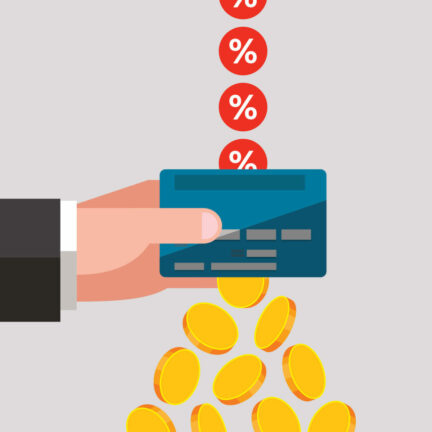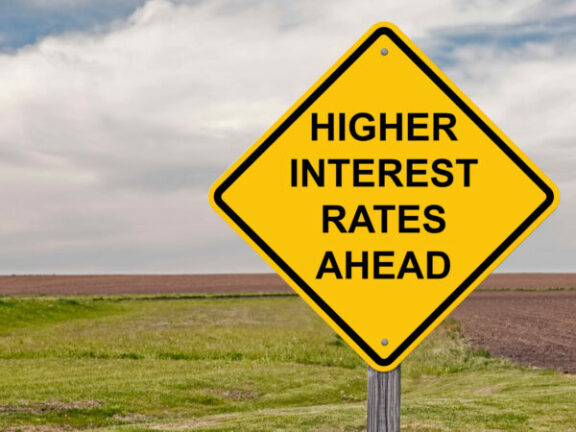Half of credit card users that currently have a balance don’t know their annual interest rates.
Each week, Consolidated Credit searches for financial research that can help you deal with your debt and budget. This week…
The interesting study
CreditCards.com conducted an online poll of 2,315 adult consumers in the U.S. to see if they understand annual interest rates.
The big result

Almost half (48%) of credit cardholders that currently have a balance don’t know their annual interest rate. Essentially, this means that they have no idea how much they’re paying for carrying those balances.
Of that number, almost one third (32%) said they didn’t know the annual interest rate on ANY of their credit cards.
The fascinating details
The good news is that 39% of balance carrying cardholders say that they know the annual interest rate on all their cards. But it’s often the people who are at the highest risk of debt problems that seem to be the least in-the-know.
- 53% of women say they don’t know their rates, compared to 43% of men
- People who make less than $40,000 per year were the most likely to say they didn’t know any of their credit card APRs
A bigger problem may be the increasing number of people who are carrying balances over month-to-month.
- 24% of cardholders say they currently carry balances on three or more credit cards
- Gen X (age 38-53) carries the most number of balances at an average of 2 cards
- Millennials (age 18-37) carry balances on 1.6 cards, on average, and Boomers (age 54-72) carry them on 1.1
What you can do
Step 1: Understand how annual interest rates impact your debt

Annual interest rates – also called annual percentage rates or APR – refer to interest charged on an account over each 12-month period. It includes fees. So, APR basically tells you what you can expect to pay for the convenience of using a particular card.
You can use APR to determine how much interest gets charged each billing cycle. Simply divide APR by 12 to get the monthly interest rate – usually referred to as the periodic interest rate.
High annual interest rates are bad for cardholders, because they mean that it costs more to use credit. Even at an average APR of 16%, about half of every minimum payment you make goes to cover accrued monthly. This keeps you in debt longer and eats up income you could use on other things if you weren’t carrying balances.
The upside is that there’s a way to use credit interest-free. If you begin a billing cycle with no balance and pay off everything you charged before the end of the grace period, interest charges never apply. The grace period refers to the amount of time you have after a payment due date to pay a balance before interest charges apply. Not all credit cards have grace periods – check your credit card agreement to see if your account offers one. If not, you can still use credit interest-free as long as you pay off the balance in-full on every payment due date.
Step 2: Check your own annual interest rates
“You want to know the annual interest rate on each account you use,” Herman argues. “That way, you can use credit strategically to maximize the rewards you earn, minimize interest charges and avoid debt problems.
Consolidated Credit offers a free credit card debt worksheet that can help you summarize all the important information about your accounts. The three things you want to know about each account are:
- Current balance
- Annual interest rate
- Current monthly payment
You can find all three points on your most recent credit card statement. Write down the information for each account on the worksheet. Then you can prioritize your debts and make an effective debt reduction plan to pay off your balances.
Ideally, you want to pay off your balances by order of highest APR first. High APR credit cards cost more each month because they have higher interest charges. Eliminating these debts first helps you save money and can help you pay off your debt faster.
Step 3: Use annual interest rates to be strategic when you use credit
Once you eliminate your existing balances in order of APR, you can also use annual interest rates to decide on the best way to use your credit cards moving forward.
“You should only carry a balance month-to-month on your credit card with the lowest annual interest rate,” Herman advises. “Reward credit cards are great for earning things like airline miles or cash back, but they also tend to have higher APR. So, you really only want to use them for transactions you can pay off in-full at the end of every month. If you want to make a big purchase or have a series of purchases that are going to generate a balance you can’t pay immediately, always opt for a low APR card.”
Infographic
Are Your Credit Cards Gluttons for Payments?
Consolidated Credit infographic explaining how high credit card APR eats away at every payment you make, preventing you from reaching zero….
Read more